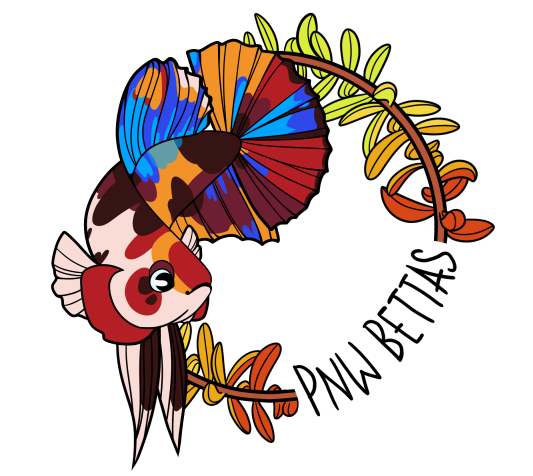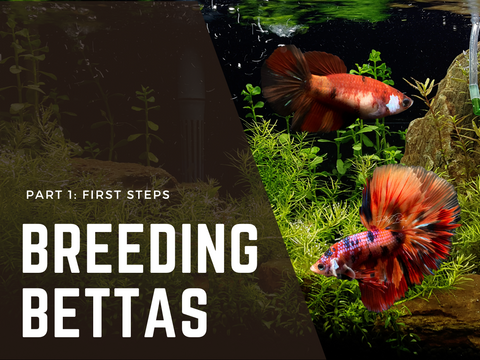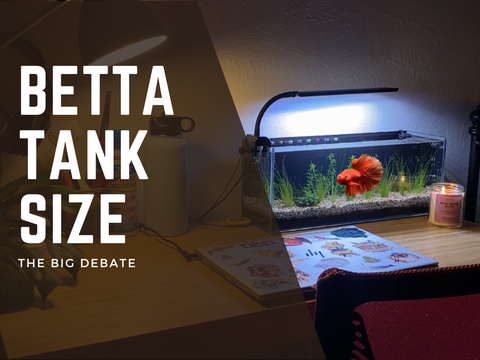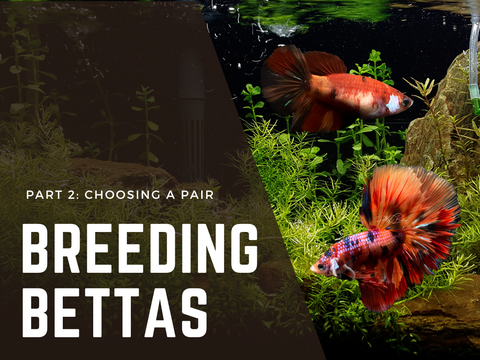So you want to start breeding bettas, what are the first things you need to think about? What information do you need to know to get stared? In this post we are going to discuss all of the things you should consider first before starting your breeding project, and some of the first steps you should take to begin responsibly breeding bettas.
Why Breed? Arent there so many bettas already in the world?With so many bettas in the world being mass produced for sale at chain stores, we want to only encourage the breeding of healthy, top quality fish. There is such an overabundance of low quality / "pet quality" fish, that we really don't need more being produced. It is however an unfortunate reality that most new breeders will start out that way. In the aim of wanting to "try out" breeding bettas, they choose some cheaper fish from a pet store without knowing what they will produce. The result is more low pet quality fish that need homes. While health is the TOP priority when breeding, it cannot be the only priority with the overabundance of bettas. Considering the quality you are producing as well is crucial.
I want to emphasize that I 100% want to encourage people to start breeding if they want to, but I have seen first hand what happens to these fish when the breeder hasn't thought through their goals/process. This article aims to give you a leg up in the breeding world. So from the start, YOU can be producing the best quality and healthiest fish you can! This is what we do need more of in the betta world, people who genuinely care for the health and quality of the fish they produce!
I want to put a little note in here about wild species of bettas. There is actually a HUGE need for USA bred wilds! This topic defiantly needs its own post, but if you think you could be convinced to move away from the colorful long finned domestics, I highly encourage you check out what species are in short supply in the hobby! And look into becoming one of the few breeders working with these species.
So what's the first step?
Step 1: Asking yourself "why"?
The very first step when you are wanting to start a breeding project is ask yourself "why". And by this I mean, what is your goal? What do you want to produce, why this type of fish, and what do you want the offspring to look/be like?
Now if this is your first project, an answer like "I want to produce nice looking healthy fish, that I can sell for more then $5" is a totally valid answer! When you are first starting out, you wont have a very in depth understanding of the genetics of these fish, and how certain crosses will interact. But don't worry about it, that stuff comes with time! After you focus on producing nice healthy fish, then you can worry about stuff like "I want my line of halfmoons to have this color, and this pattern" or "I haven't seen solid black dumbos, I would like to work on creating them".
Step 2: Take into consideration the "costs"
When it comes to starting a breeding project, there's a lot more to the "costs" then just the financial aspect. We have to consider those expenses for sure, but you also need to consider the time and space investments. Lets break it down into those three categories and briefly cover what you will need in terms of each.
Financial investment:
- A quality pair (or pairs) of bettas
- High protein foods
- Breeding tank/tub
- Small live food cultures (vinegar eels, paramecium, infusoria etc.)
- Baby brine shrimp eggs and hatchery, salt
- Grow out tanks
- Jars (1/4 gal delis, beanie boxes, 1 gal plastic jars, etc.)
- Method of heating jars (space heater, heat cable, heat mats)
- Electric bill increase
- Water bill increase
This is just a general idea of some of the financial costs you need to consider. Of course if you are an avid betta keeper already, I'm sure you have many of these things already. You most defiantly do not need to get all of these things ahead of time, and probably should not actually. But knowing that you will need to buy/find containers to jar your fish as they reach sexual maturity is still important to keep in mind before starting.
Space investment:
One of the things that sets breeding bettas apart from breeding other fish is the fact that they are solitary. Many if not most of the males you produce will need to be separated out as they become aggressive, and this often starts to happen weeks or months before they are sellable adult size. These jars can take up A LOT of space compared to just having large grow out tanks. So keep in mind that you will need to have a space to put all of these jars, along with a way to keep them temp controlled. Growing bettas need warm water to keep processing their food and to keep them growing.
You will of course still need grow out tanks. What size tank/tanks you may ask? That all depends on your spawn size. A spawn of 20 bettas can grow out in a much smaller tank compared to a spawn of 400 bettas. This is when having multiple larger tanks comes in handy.
Time investment:
Breeding any species of fish can be a large time investment, bettas are no exception. When they are small, you can be feeding them up to 5 times a day to get them growing fast. As they age, you will also have to spend time water changing, sorting through the fish (yes this includes culling), and eventually water changing jars.
It can be challenging finding time to do these things if you are gone all day for work or school, but as long as you create a schedule, you can find ways to make it work.
Step 3: What to do with all these bettas?
The last thing I would like people to consider, is what are you going to do with all these new fish you have produced? Do you have a local fish store you are going to work with to sell these fish? Do you have local aquarium swaps you can be a vendor at? Maybe you plan on advertising them online and shipping even.
Because bettas can produce so many offspring (1000+ from experienced breeders), and they cannot be housed together once adults, you do need a plan to rehome these fish when they are old enough.
If your plans are to sell the fish, its very important to understand that being able to sell fish for $40-$50 is something that comes with experience and recognition. If you want to be able to sell your fish at a higher price point, you first need to prove yourself as a breeder, and demonstrate your knowledge and the quality of your fish. And its also important to note that not all the fish produced will be of the same quality of the parents, many will be considered lower pet quality fish. This is nothing to worry about of course, most people are looking for pets! Just many of the fish will be worth much less then what you paid for their parents.
Step 4: How to I start?
I hope after reading all this you are not discouraged, but rather, enlightened on what it will take to get into breeding the best quality fish possible! This information is not something most breeders will start out knowing, so you are already ahead of the game just by reading this!
I am not stopping here when it comes to breeding articles, there is much more to come. Rather then doing it all as one long article, I will be breaking it up into more readable sub articles, like this one. So stay tuned for out next topic: How to Choose Bettas for Breeding.




Comments (2)
Thank you for your article very in lightning. That is what I was wanting to do is breed the Dumbo halfmoon beta but now I am thinking about maybe breeding wild and rare could you put me in the right direction?
HI I read the blog to the end and I’m telling you I can not wait to read what you have next. I unfortunately jumped into the hobby without thinking of any of this stuff, you have helped me a lot!